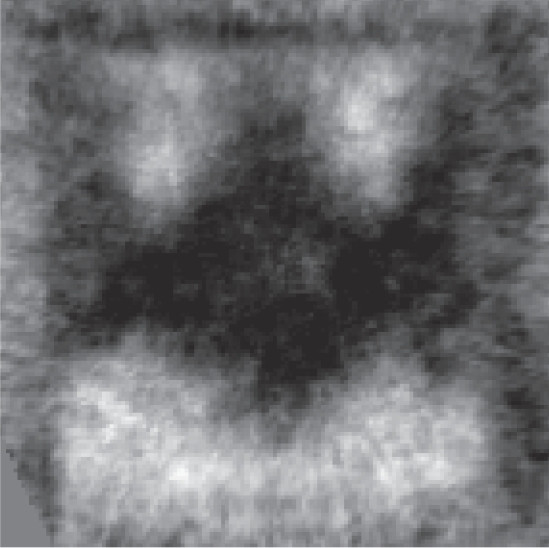Data storage: Selective, lightning speed of magnetic switching paves way for superfast, compact hard drives
Batman logo shows structure design can control switching pattern.

An international team of scientists has succeeded in selectively switching tiny, magnetic structures at speeds that could make data storage on hard drives faster, more compact and more efficient.
Computer hard drives store data magnetically. The magnetic switching and data storage follows when a small magnetic head glides over the hard drive.
By reducing the size of the magnets and increasing the speed of reading, data storage quality can be improved.
It has been known that a short, intensive laser pulse can switch micro-magnets hundreds of times faster than a magnetic head by heating up the tiny magnets very quickly.
How to minimise the size of the switched domain was the next step. This can be done either by making the structures smaller or focusing the light to a smaller spot.
The team worked on a surface made of a regular arrangement of tiny magnetic squares where every square and even a part of a square works like a tiny magnet that can store data.
They were able to reverse the magnetic direction of the squares using a laser beam for a very short time, a femtosecond or a millionth of one billionth of a second.
They observed the lightning-quick changes in magnetic orientation that happen within 70 billionths of a second apart (at a frame rate per second that is almost 600 million times higher than in motion pictures).
Batman logo
They saw that the magnetisation was not reversed across the board. But, substructures formed within the illuminated squares.
The laser light did not switch the structure homogeneously.
In one part of the surface, they saw a very peculiar magnetic substructure: a tiny black Batman logo appeared on a white background.
The Batman figure has been ascribed to the interplay between the light and the micro-squares.
Thus, the magnetic switching pattern can be controlled by structure design. Differently shaped magnets could be used to create other figures than the Batman logo.
The team comprised scientists from Paul Scherrer Institute, Switzerland; Radboud University Nijmegen, Institute for Molecules and Materials, Netherlands; Helmholtz-Zentrum Berlin für Materialien und Energie GmbH, Germany; College of Science and Technology, Nihon University, Japan.
© Copyright IBTimes 2025. All rights reserved.





















